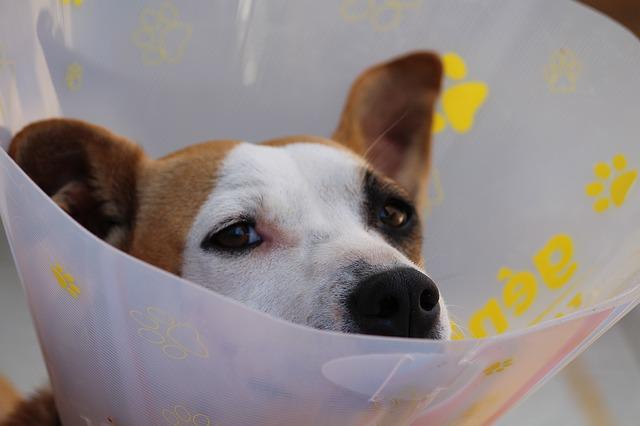Whether you want to bring your furry friend on holiday or own a dog on the Costa Brava, this article covers it all!

In this article I’m going to look at the requirements for dogs in Catalonia. This article will cover ownership requirements, importing your dog, bringing your dog on holiday and health considerations.
Unlike the United Kingdom, where dogs are often imported for adoption as there is a shortage of available dogs, Spain has plenty of dogs available. Far too many in fact.
It has been illegal since 2008 for rescue centres to destroy healthy animals. That means many dogs spend their entire lives living in dog rescue centres. Leishmania is common throughout Spain and many potential owners will avoid dogs who are affected.
So if you are looking to adopt a dog it is fairly easy to find a centre with a good selection to choose from to find your ideal best barking buddy.
Owning a dog

There are a number of requirements by law which you need to be aware of. Your dog needs to be chipped and registered with your local authority. There may be an associated fee for this, depending on where you live.
More generally your dog needs to be kept in hygienic conditions and well looked after. It shouldn’t really need to be said, but dogs need adequate space, exercise, food, shelter and love. If you can’t provide those then you shouldn’t even think of owning a dog. But if look after your dog properly you’ll be rewarded. This isn’t even karma – dogs are pretty fast at returning love so you won’t have to wait for another life to be rewarded.
Dogs may be left alone for up to 24 hours but animals should not have to remain in a car, on a terrace or balcony or other places with limited movement ability for extended periods. And while vaccinations are not compulsory in Catalonia, it makes sense to take your pet for an annual check-up with your local veterinarian.
You should also be aware that dogs should be walked on the lead and your should collect, well, any deposits left by your dog.
Microchip
Dogs need to have a chip implanted by a vet so they can be identified using a scanner. In fact, in Catalonia, cats and ferrets are supposed to be microchipped, although I don’t know of anyone who does. If your dog is lost or stolen it can be identified along with your contact details.
If your dog goes stray and ends up in the hands of the local police you may receive a phone call asking you to collect your furry friend – and notified of a fine at the same time. The amount is up to the local authority and varies widely.
If you get your pet from an dog shelter it is likely to be chipped already. They’ll take the steps to put the dog in your name with your contact details. Otherwise you should take your dog along to your local vet and have it microchipped. It’s pretty easy and not painful. You’ll be provided with a registration document.
Registration
One you have your dog you need to register it with your local authority within 30 days, or within three months of birth if a puppy. Take along the paperwork provided by your vet when chipped or by the animal shelter. Take along your passport and/or Spanish ID card. It should be a pretty quick and easy process.
If you move to another town or if your pet dies you need to notify your local authority. You’re supposed to carry your dog’s documents when you take it out but I don’t think anyone actually does this.
Dangerous breeds
You should also be aware of additional requirements for breeds considered to be dangerous. To own or even walk a dangerous breed you must apply for a licence from your local authority, valid for five years. Owners also need civil liability insurance of at least €120,000. Full requirements for dangerous breeds are listed below:
Requirements for dangerous breeds
- Licence to own or walk a dangerous breed.
- Civil liability insurance of at least €120,000.
- They must be walked on a lead no longer than two metres.
- They must wear a muzzle in public.
- Walls and fences of their enclosure must be high enough and strong enough to prevent them escaping.
- Doors must be designed so as they cannot be opened by the dog.
- The enclosure must include signage indicating a dangerous breed.
- Only one such dog can be walked per person.
- Dangerous dogs may only be bred by licenced centres.
These additional requirements also apply to dogs that have been trained to be aggressive or with a history of aggressive behaviour. Breeds considered to be potentially dangerous in Catalonia at the time of writing are:
Dangerous breeds
- Akita inu
- American bully
- Bullmastiff
- Dobermann
- Dogo Argentino
- French mastiff
- Brazilian mastiff
- Neapolitan mastiff
- Pit bull terrier
- Presa Canario
- Rottweiler
- Staffordshire bull terrier
- American Staffordshire terrier
- Tosa inu
Source: Gencat (in Catalan)
In addition, crossbreeds with one parent on the list may be considered dangerous if they have the appearance of the dangerous parent. And local authorities may determine that dogs with a certain appearance (such as a wide chest, muscular, large head) are classified as dangerous.
Veterinary care and health

Most towns of any reasonable size have at least one veterinary clinic, so it’s probably a good idea to find one where they speak English unless your Spanish is pretty good.
If you need specialist veterinary care or surgery then most vets will advise you to go to Canis in Girona. It’s one of the top veterinary hospitals in Spain with advanced, modern equipment and staffed 24/7. We have used Canis for emergencies and for specialist care and considering everything they offer they aren’t expensive.
While not compulsory, your pet probably has annual vaccine booster shots and a check-up. Your vet will be able to discuss the pros and cons of the various vaccines, but two of note are the vaccines for rabies and leishmania.
Rabies
While compulsory in most of Spain, in Catalonia your dog is not required to be vaccinated against rabies. However, if you are travelling to Catalonia with a dog you’ll still need your dog to have the jab. And if you live here and want to travel outside Catalonia your dog should have the vaccination.
Leishmania
This is a parasitic disease caused by sand-flies and common in many areas of Spain and the province of Girona is one of the hotspots with 25% of dogs estimated to be infected. It is thought it was introduced to Spain through the importation of sand from North Africa.
These days there are treatments for dogs that test positive for Leishmania. There is also a vaccine available which requires an annual booster.
Bringing your dog to Spain

If you’re bringing your dog (or cat/ferret) to Spain from another country with your dog there are a number of requirements you need to meet, depending on where you are travelling from. These are:
- Animals must be at least 15 weeks old.
- Microchip
- Vaccinations
- Pet passport/health certificate
Also note that you can travel with a maximum of five pets.
Age
Pets must be at least 15 weeks old to travel to Spain.
Microchip
You pet must have an ISO 11784/11785 compliant 15 digit pet microchip. An identification tattoo is acceptable if done prior to 3rd July 2011.
Vaccinations
Your pet must be vaccinated against rabies at least 21 days prior to arrival.
This should be all you need when travelling within the EU or from a non-EU country with a low incidence of rabies, such as the UK or USA. Regulations sometimes change so check with your vet to be on the safe side, but you can see the full list of countries here.
However, if travelling from a country with a high incidence of rabies an additional blood test is required 30 days or more after the date of vaccination and at least three months prior to arrival in Spain.
If entering Spain from outside the UK or EU dogs must be certified to have received treatment against the Echinococcus multilocularis (tapeworm) parasite 24 to 120 hours prior to arrival. They must also be certified by a vet as healthy and fit to travel within 48 hours prior to the departure date.
Also note that when travelling to the UK your dog must have documentation to show that a vet has administered tapeworm treatment between 1 and 5 days prior to travel.
Animal Health Certificate or Pet passport
An EU Pet Passport or UK issued Animal Health Certificate is required for your pet to enter Spain. Basically it’s a document authorised by an accredited vet showing that your pet is fit and healthy for travel. One downside to the Animal Health Certificate is that it is issued on a per trip basis a maximum of ten days prior to departure from the UK.
Be aware that pet passports issued in the UK prior to Brexit are no longer valid for travel to Europe – now you need an Animal Health Certificate.
Different counties in Europe may have slightly different entry requirements for pets. In Spain you’ll need proof of the date your pet was microchipped and vaccination history, including rabies as above.
The best advice is to talk to your vet. If they are accredited then they’ll take you through the whole process. If not, they should be able to advise you on a vet who is accredited.
Travel
Okay, so we’ve established what you need to bring your pet into Spain. Most pets travel by car but if flying from outside the EU you must enter via one of the following airports: Barcelona, Madrid, Malaga, Tenerife Sur or Valencia.
If travelling by sea your pet can enter by the following ports: Algeciras, Almeria and Santa Cruz de Tenerife.
Most pets being brought in are travelling for family holidays by car, so that’s what I’ll focus on next.
Holidaying with your pet

Most pets entering Spain for a holiday with their family will arrive in a car. From the UK and Ireland that generally entails a Channel crossing to France followed by the long drive down to the border, although there are ferries direct to northern Spain that accept pets.
So first we’ll consider the route through France before looking at other options.
Cross Channel to France
There days there the two options for crossing the channel are a cross-Channel ferry or the Channel Tunnel. Note that while Eurotunnel’s Le Shuttle service does accept pets the Eurostar train service does not. The difference between the two services is simple.
Eurotunnel Le Shuttle
Le Shuttle runs between Folkestone and Calais and consists of a locomotive at each end of the train with double and single decker “shuttle” carriages. You drive your vehicle onto a shuttle and and remain in it for the 35 minute crossing. You don’t have to remain in your vehicle, but with no facilities other than toilets, why would you not?
Eurostar is a more traditional high speed train service. There are various routes, including London St Pancras to Paris Gare Du Nord, making it ideal for travel between these two cities. Unless you want to take your pet, of course.
Travelling from the UK with your pet (dog, cat or ferret) you’ll need documentation to demonstrate the following:
- Your pet has a microchip
- EU Pet Passport/Animal Health Certificate
- Rabies vaccination
Nothing really surprising there, it matches the requirements mentioned previously. Note that the requirements for dogs entering the UK also require a tapeworm treatment administered 1-5 days before travel – not cats or ferrets though. You can read Le Shuttle’s pet checklist here or visit the entire section dedicated to pets here. This is all nice and clear.
You need to go to the pet check-in prior to boarding but the process seems pretty straightforward (I haven’t made the trip personally).
Cross Channel Ferry
There are currently three cross Channel ferry operators, all of which allow pets on board.
P&O run a Dover to Calais service: pets can travel in the car on the 90 minute crossing but no information is provided on the website beyond the documentation required.
DFDS operate services from Dover to both Dunkirk and Calais: pets must be advised at time of booking complete with Pet Passport/Animal Health Certificate number.
Brittany Ferries operate services between a variety of ports: on some ferries pets can remain in the car, but there are also kennels and pet friendly cabins. You can check out what is available here to ensure you book a suitable ferry.
Direct sailings to Spain
As well as operating cross-Channel, Brittany Ferries also sails between both the UK and Ireland and northern Spain. Note that in communal areas dogs must be muzzled and because of the length of the crossing animals cannot remain in your car. Click here for comprehensive information on facilities for pets.
The routes served are:
Portsmouth to Santander: the ferries Galicia and Salamanca sail this route, which takes around 30 hours. There are 22 pet-friendly cabins and a nearby exercise area as well as 10 onboard kennels for dogs.
Plymouth to Santander: this 20+ hour crossing is served by Pont-Aven. The ship has 28 pet-friendly cabins, an exercise area and 42 dog kennels.
Portsmouth to Bilbao: this crossing takes two nights on board the Salamanca, which has 22 pet-friendly cabins and 10 dog kennels.
Rosslare to Bilbao: this crossing from Ireland takes 30 to 36 hours on the Connemara. There are 13 pet-friendly cabins and a pet exercise area but no kennels.
Accommodation
Some hotels/holidays homes/campsites allow dogs and some don’t. Always check in advance to ensure you don’t get a nasty surprise when you arrive.

